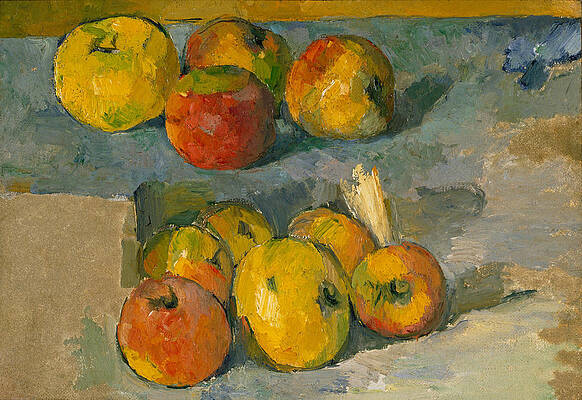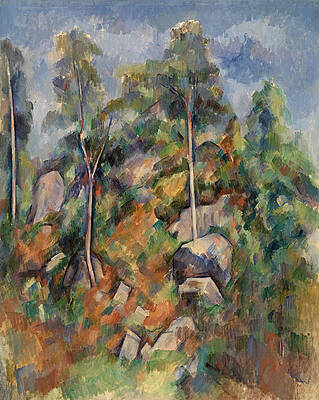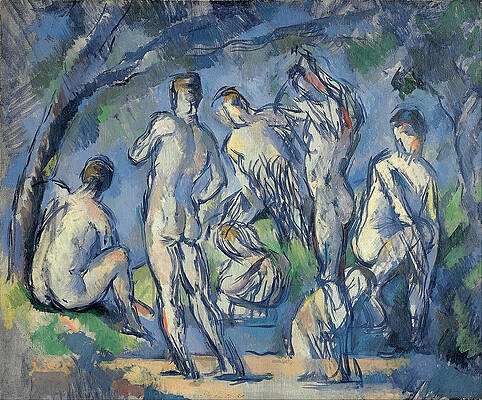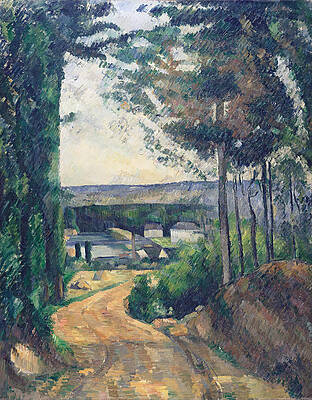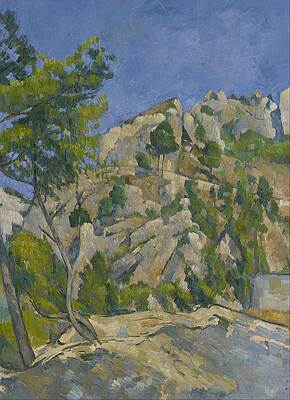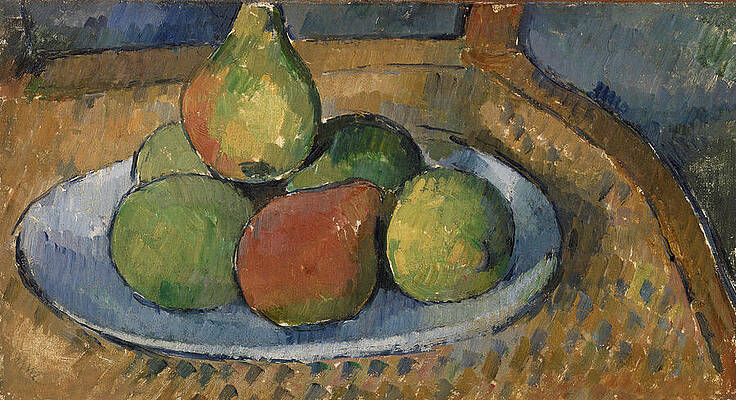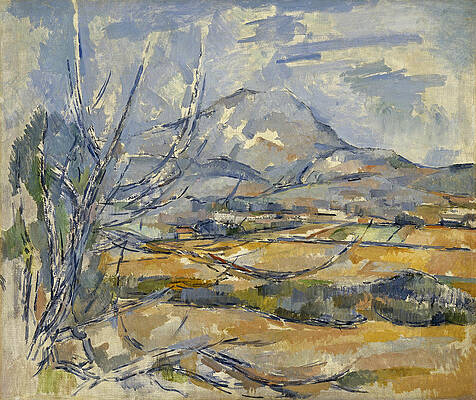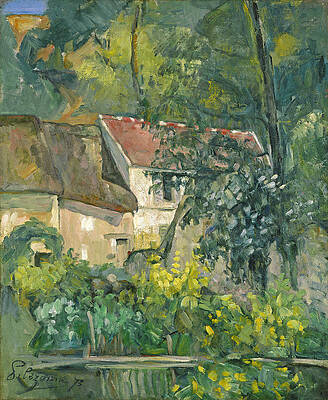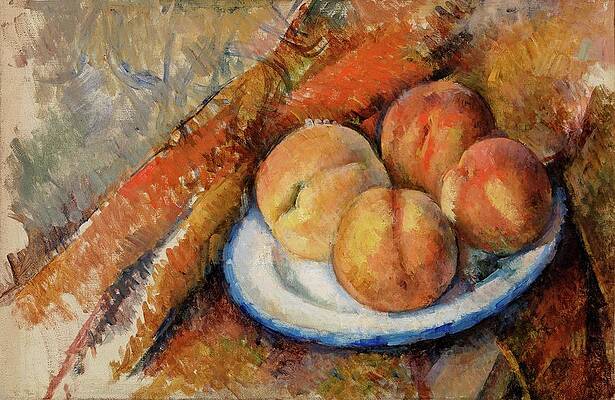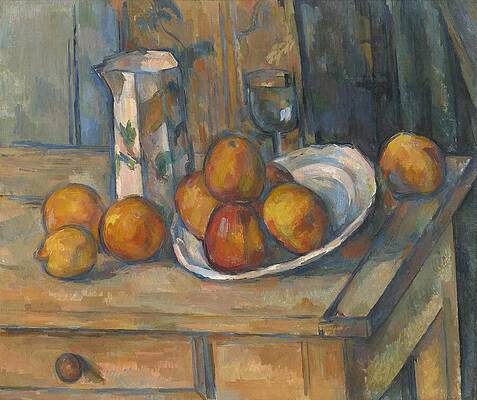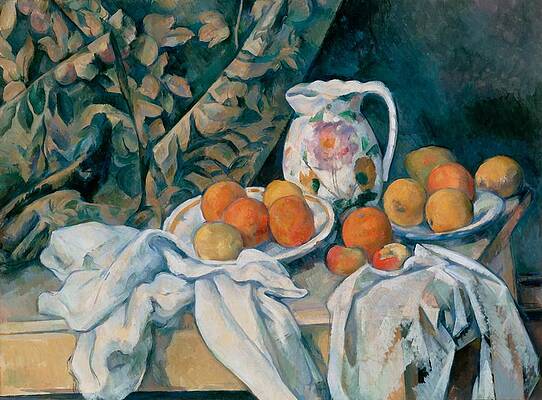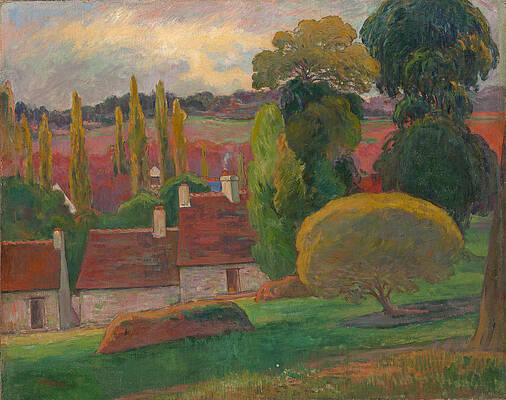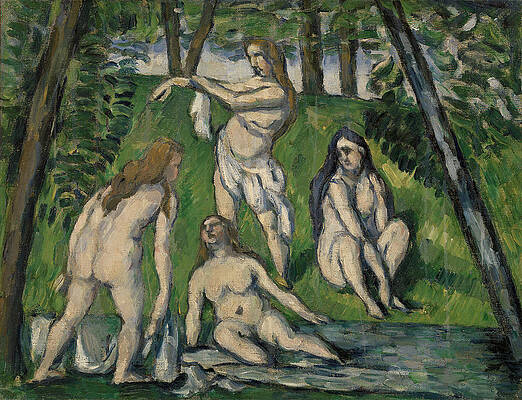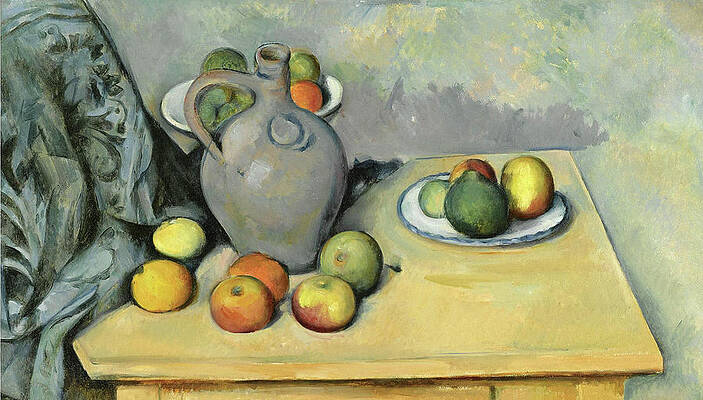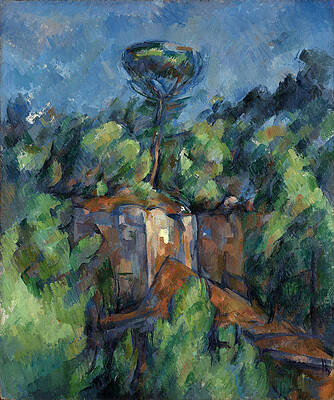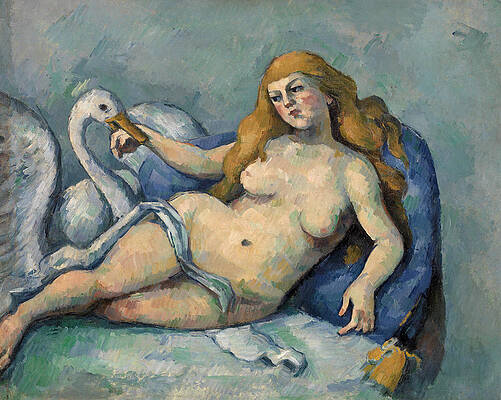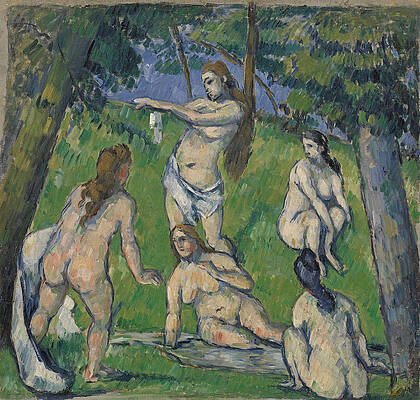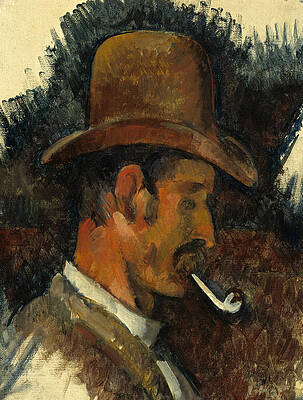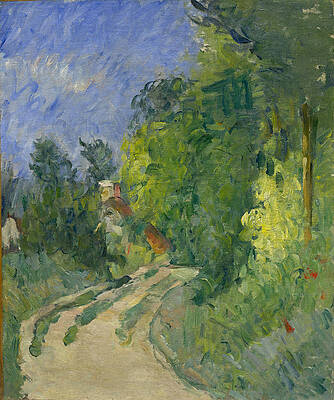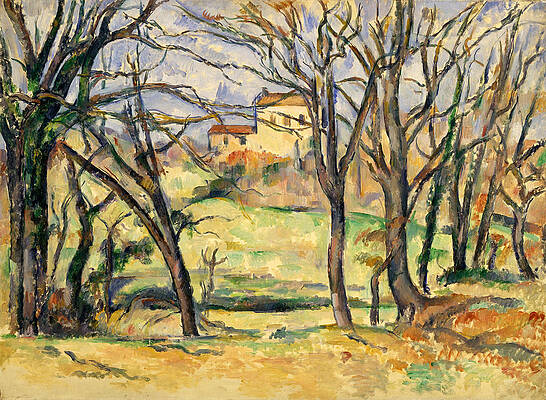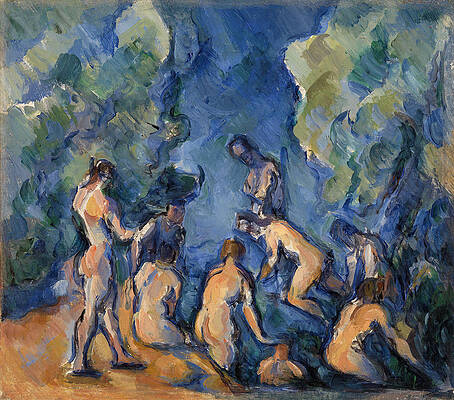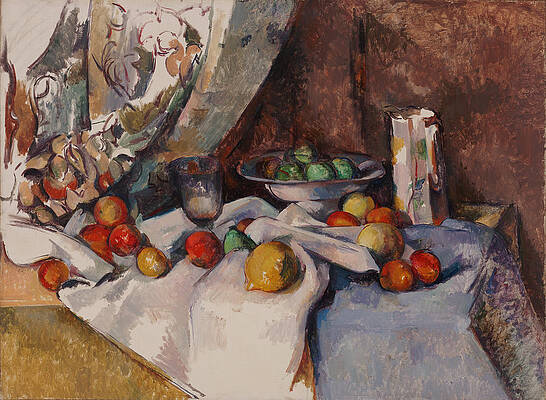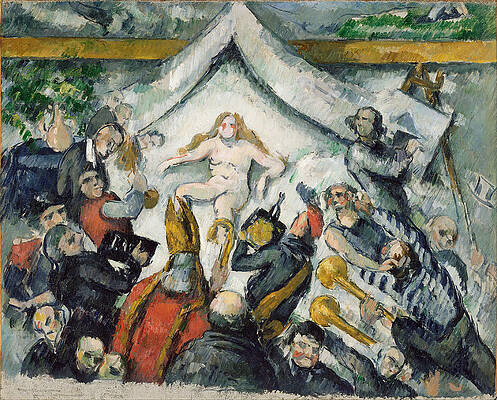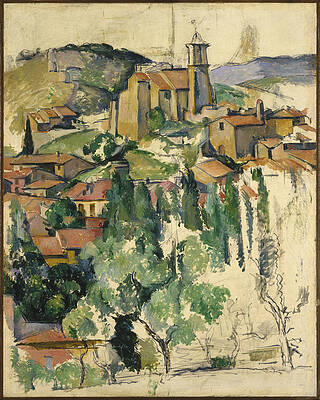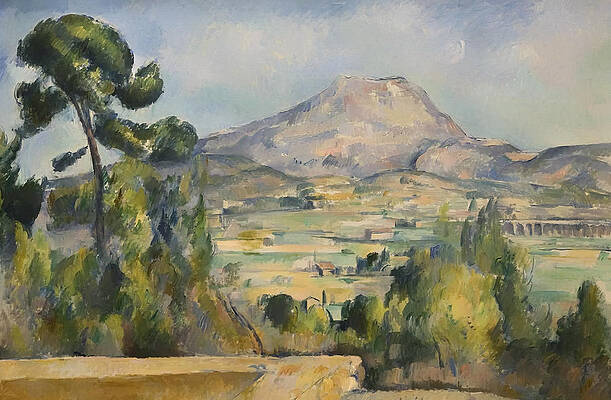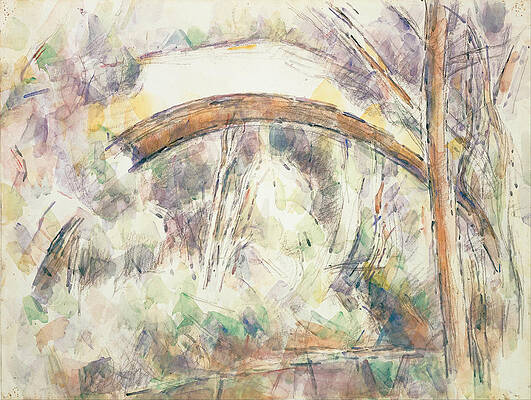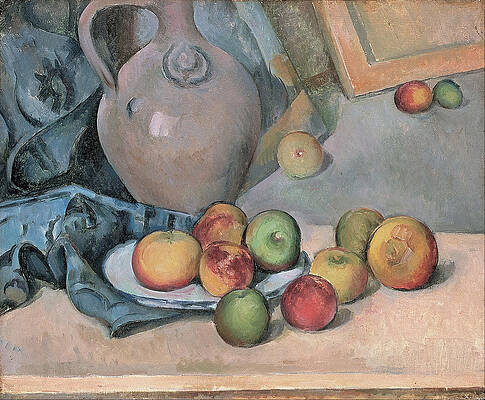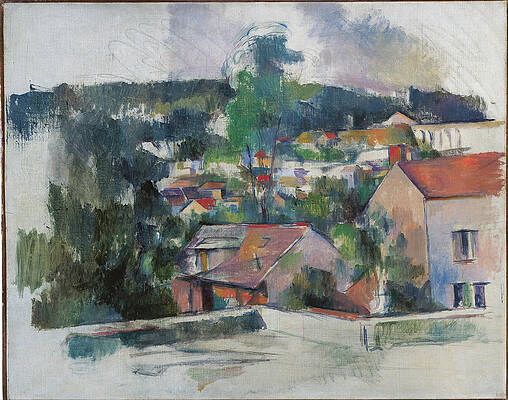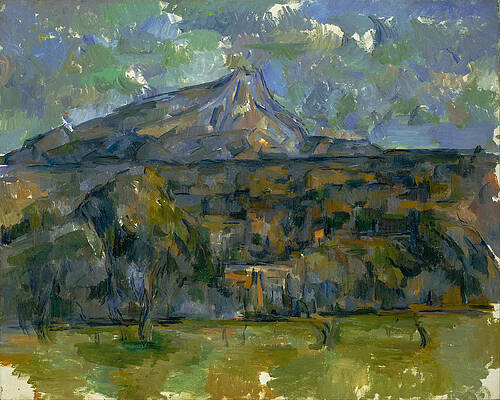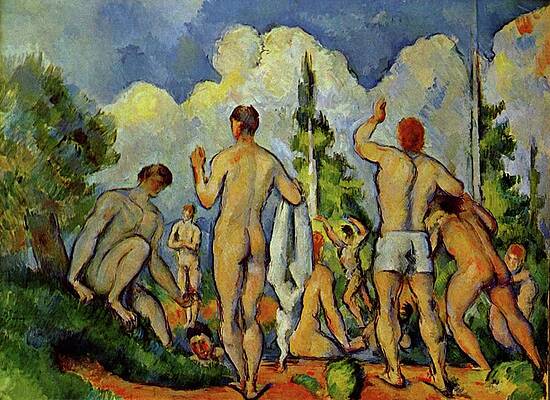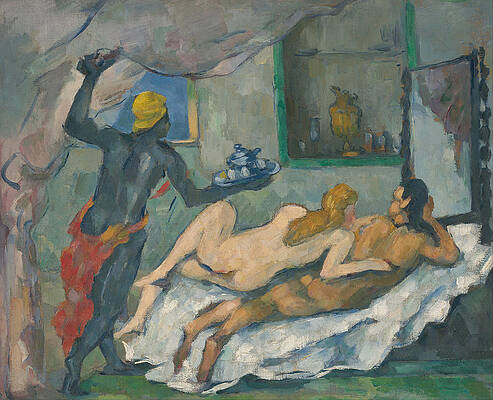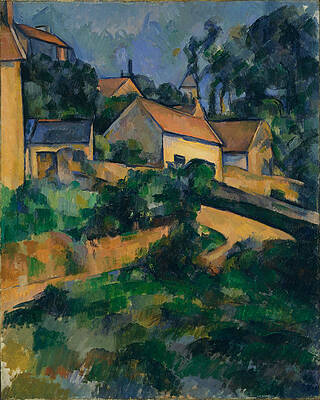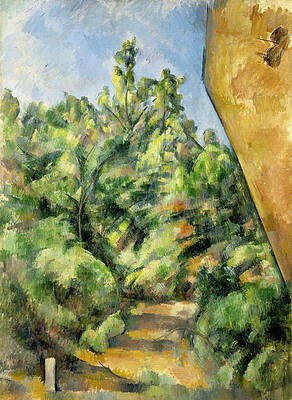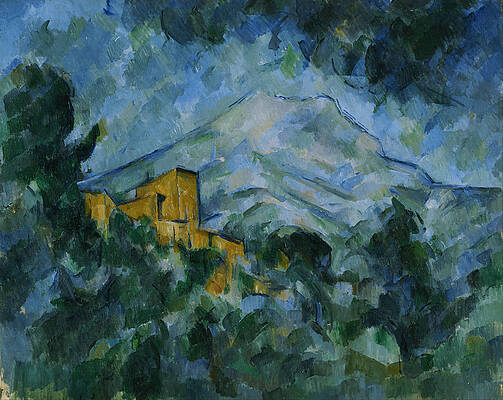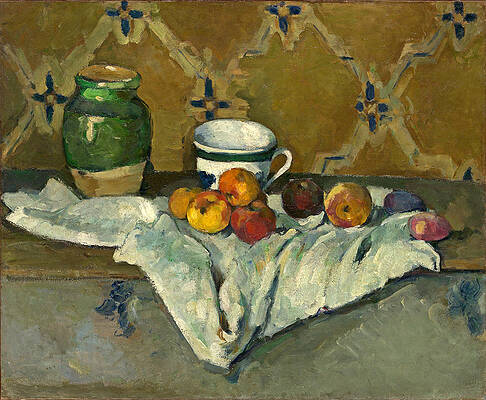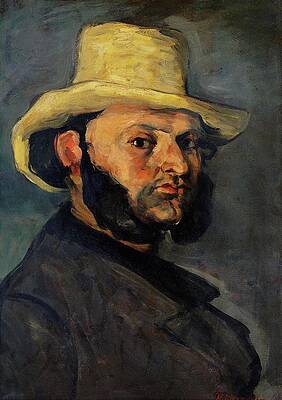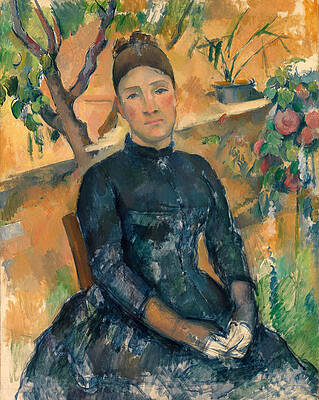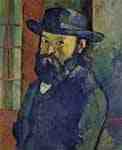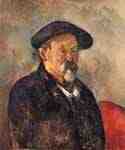Paul Cézanne
Paintings
Flowers in a Rococo Vase
Apples
Rocks and Trees
The Large Bathers
The Bay of Marseilles Seen from L Estaque
Houses In The Greenery
An Old Woman with a Rosary
Seven Bathers
Road leading to the lake
Still Life with Apples
Country House by a River
Interior of a forest
Bottom of the Ravine
Still Life with Apples and Pears
Fields at Bellevue
Boy in a Red Waistcoat
The Garden at Les Lauves
Madame Cezanne In A Yellow Armchair
Madame Cezanne
Plate of Fruit on a Chair
The Bare Trees at Jas de Bouffan
Mont Sainte-Victoire and the Viaduct of the Arc River Valley
Chestnut Trees at Jas de Bouffan
Forest Scene .Path from Mas Jolie to Chateau noir
Montagne Sainte-Victoire
Bend Of The Road At The Top Of The Chemin Des Lauves
Milk Can and Apples
Chateau Noir
Chateau Noir and Mont Sainte Victoire
Farm in Normandy
Avenue at Chantilly
Mont Sainte-Victoire
Seated Man
Landscape from Jas de Bouffan
The Three Skulls
The Battle of Love
Village at the Water's Edge
The Well Driller
Plate with Fruit and Pot of Preserves
At the Water's Edge
House of Pere Lacroix
Winter Landscape, Giverny
The Allee at Marines
Four Peaches on a Plate
Railroad Cut
Trees and Road
Village Square
The Courtesans
Gardener
Girl with Birdcage
Still Life with Milk Jug and Fruit
Landscape near Paris
Still Life with a Curtain
Millstone in the Park of the Chateau Noir
Quartier Four, Auvers-sur-Oise
A Farm in Brittany
Four Bathers
Young Man and Skull
La Riviere
Rochers
Woman with an Ermine after El Greco
Pitcher and Fruit on a Table
Still Life with Green Melon
Trees
Satyrs and Nymphs
Quarry at Bibemus
View of the Bay of Marseille with the Village of Saint-Henri
Apples and Cloth
Bibemus Quarry
The Flowered Vase
Bottle and Fruits
Autumn Landscape
Ginger Jar
The Farm at the Jas de Bouffan
Peasant Standing with Arms Crossed
The Gardener Vallier
Vase of Flowers
Apples
Bathsheba
Standing Bather Drying Her Hair
Sous-Bois
Leda and the Swan
Seated Peasant
Church at Montigny-sur-Loing
Three Pears
Standing Female Nude
The Neighborhood of Jas de Bouffan
Five Bathers
Man with Pipe
Young Italian Woman at a Table
Bend in the Road Through the Forest
Montagne Sainte-Victoire, from near Gardanne
Pears and Knife
Gardanne
Trees and Houses Near the Jas de Bouffan
The Card Players
Bathers
Still Life with a Ginger Jar and Eggplants
The Fishermen. Fantastic Scene
Rocks in the Forest
The House with the Cracked Walls
The Pool at the Jas de Bouffan
Still Life with Apples and a Pot of Primroses
Achille Emperaire
Still Life with Skull
Still Life with Apples
The Terrace at the Garden at Les Lauves
Maison Maria with a View of Chateau Noir
Still life with kettle
Bathers Les Grandes Baigneuses
The Eternal Feminine
Mont Sainte-Victoire
The Village of Gardanne. Le Village de Gardanne
The Tree by the Bend
Montagne Saint-victoire
Pines and Rocks.Fontainebleau
The Bridge of Trois-Sautets
Fruit and a Jug on a Table
Landscape. Road with Trees in Rocky Mountains
Mill on the Couleuvre at Pontoise
Still life
Stoneware Pitcher
Straw-Trimmed Vase.Sugar Bowl and Apples
The Cardplayer
Turn in the Road
The Pond
Landscape
Mont Sainte-Victoire
House in Provence
Avenue of Chestnut Trees at the Jas de Bouffan
Banks of the Marne
Bathers
Still Life with Flowers and Fruit
Ginger Pot with Pomegranate and Pears
Afternoon in Naples
Turning Road at Montgeroult
Landscape in Provence
Trees and houses Provence
The Buffet
The Red Rock
Morning View of L Estaque Against the Sunlight
Self-Portrait with a Hat
Mont Sainte Victoire and Chateau Noir
The bathers large plate
The Bather
Bowl and Milk Jug
Still Life with Onions
Group of Bathers
Landscape from Jas de Bouffan
Antoine Dominique Sauveur Aubert , the Artist's Uncle
Still Life with Jar, Cup, and Apples
Bathers
Gustave Boyer in a Straw Hat
Antoine Dominique Sauveur Aubert, the Artist's Uncle as a Monk
Madame Cezanne in the Conservatory
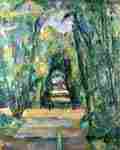
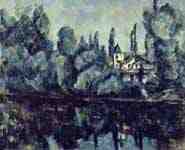
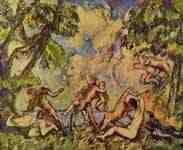
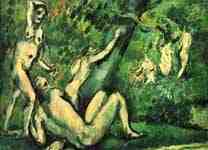
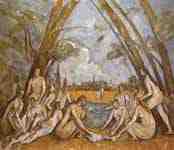
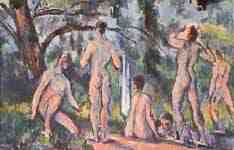
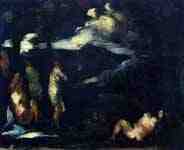
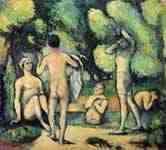
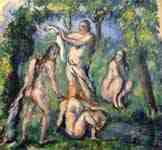
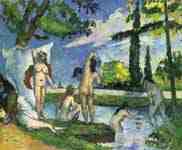
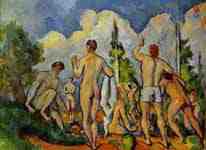
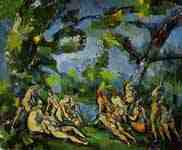
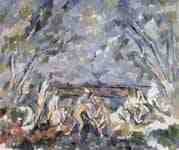
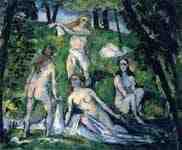
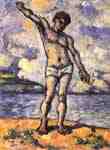
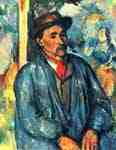
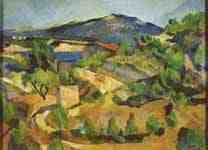
Mountains in the French Provence
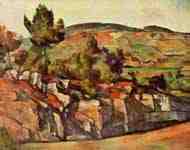
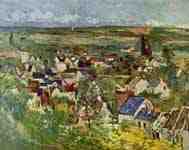
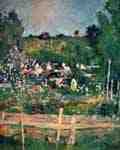
View of Auvers-sur-Oise. The Fence
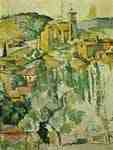
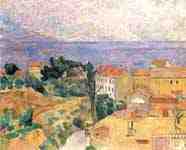
View of L' Estaque ( area near Marseille)
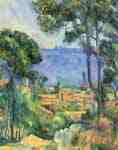
View of L' Estaque and the Chateaux d'If
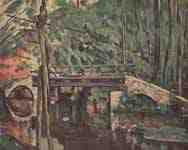
Bridge in the forest (" Le petit pont " )
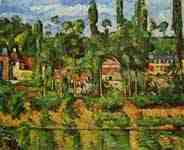
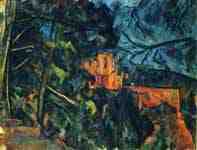
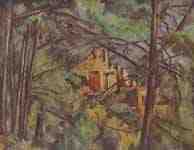
The " Château Noir " behind trees
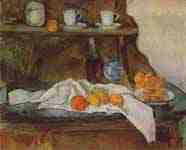
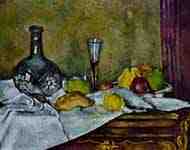
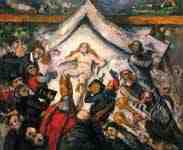
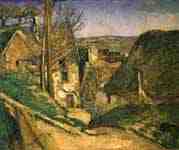
The House of the Hanged Man at Auvers
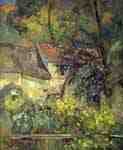
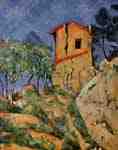
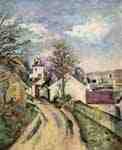
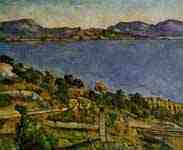
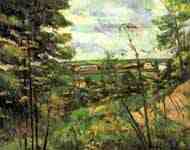
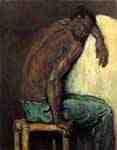
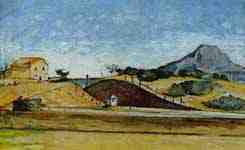
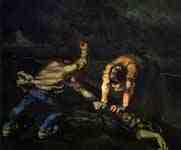
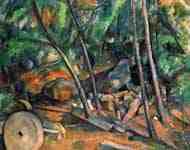
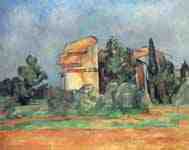
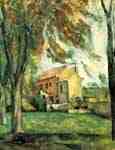
The pond of the Jas de Bouffan in winter
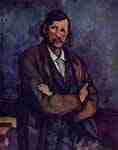
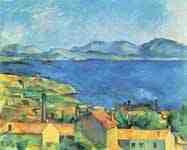
The bay of Marseille seen from L' Estaque
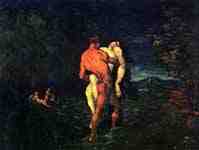
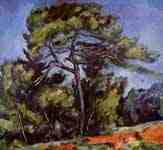
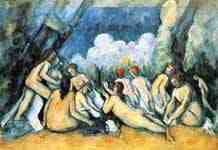
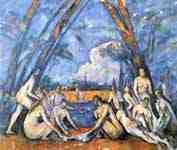
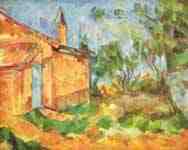
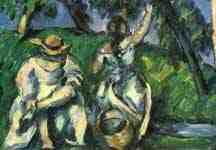
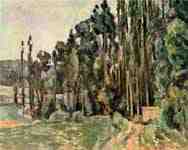
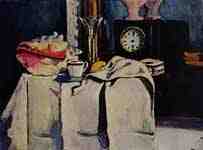
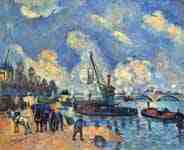
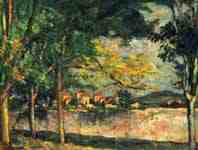
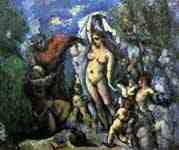
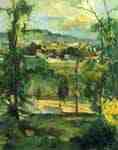
Village behind the trees , Ile de France
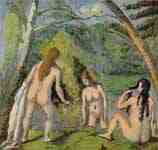
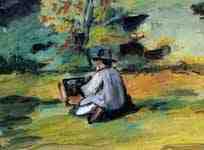
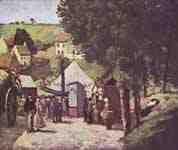
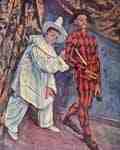
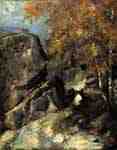
Rocks in the forest of Fontainebleau
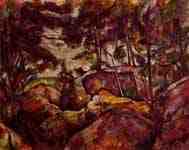
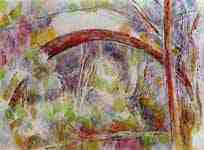
River at the bridge of the three sources
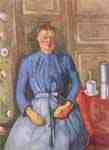
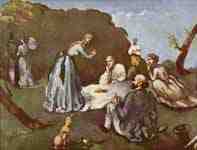
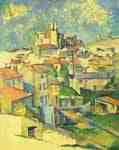
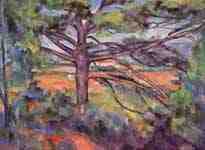
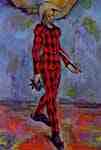

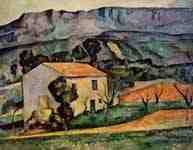
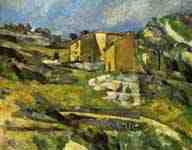
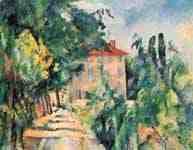
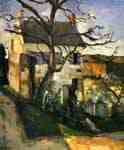
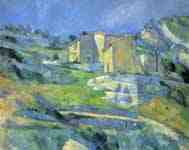
Houses in Provence (Houses at L' Estaque )
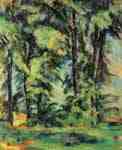
Tall Trees at the Jas de Bouffan
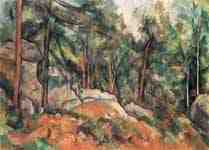
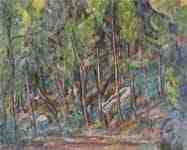
In the forest of Fontainebleau
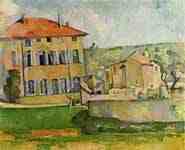
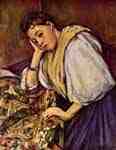
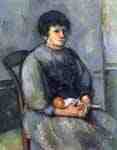
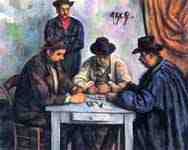
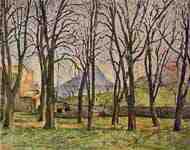
Chestnut Trees at the Jas de Bouffan
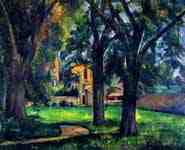

Boy with a Red Waistcoat
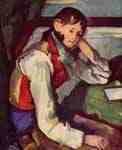
Boy with a Red Waistcoat
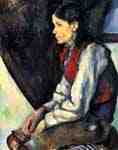
Boy with a Red Waistcoat
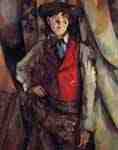
Boy with a Red Waistcoat
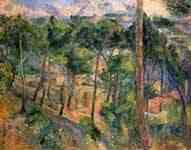
L' Estaque, View through the pines
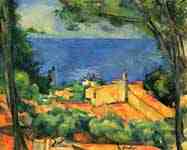
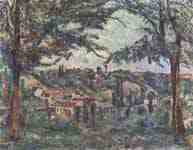
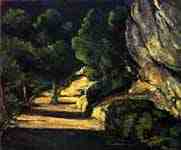
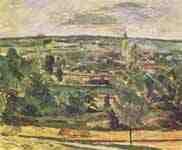
Landscape at the Jas de Bouffan
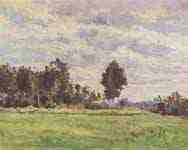
Landscape in the Ile de France
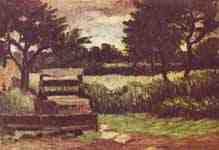
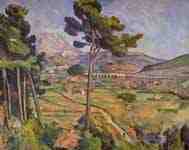
Landscape with Viaduct ( Mont Sainte- Victoire )
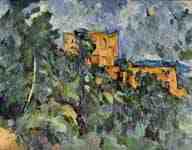
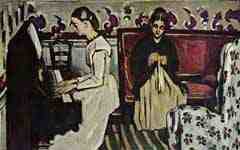
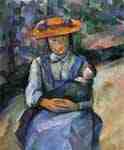
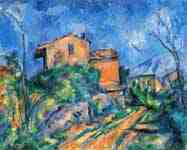
Maison Maria on the way to the Château Noir
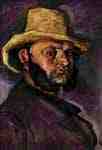
Man with the straw hat ( Portrait of Boyer )
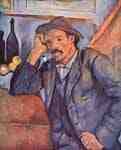
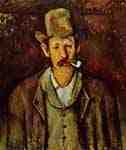
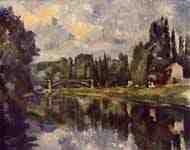

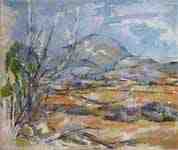
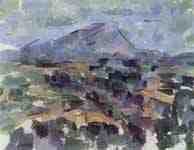
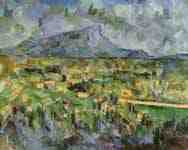
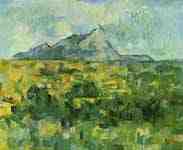
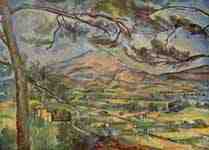
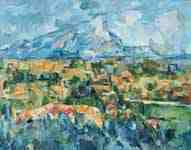
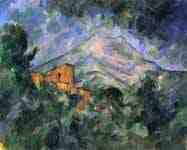
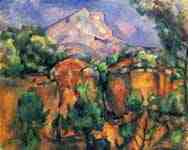
Montagne Sainte-Victoire and Chateau Noir
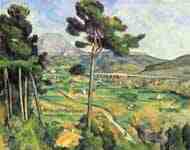
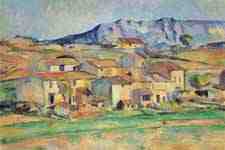
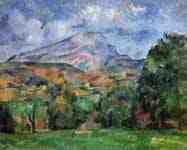
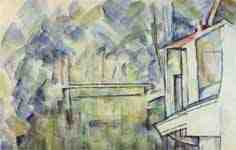
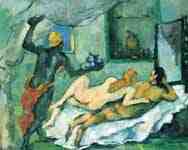
Afternoon in Naples ( The rum punch )
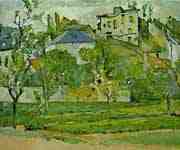
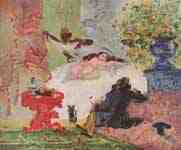
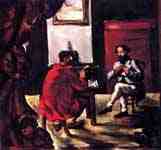
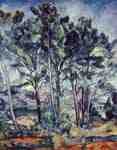
Pines and Aqueduct ( The Viaduct )
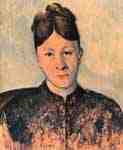
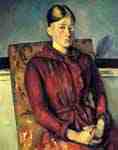
Portrait of Mme Cézanne in the yellow armchair
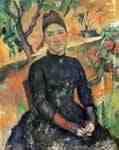
Portrait of Mme Cézanne in the greenhouse
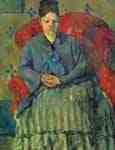
Portrait of Mme Cézanne in red armchair

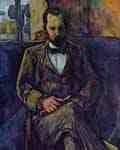
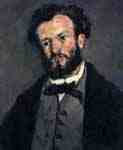
Portrait of Antony Valabrègue

Portrait of Louis -Auguste Cézanne
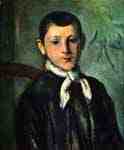
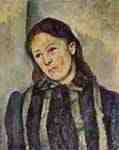
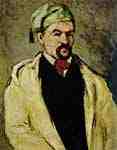
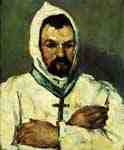
Portrait of Uncle Dominique as a monk
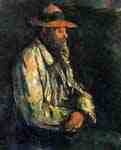
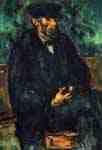
Portrait of Vallier ( The Sailor )
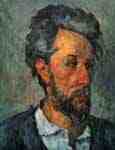
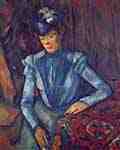
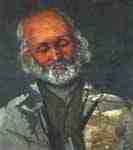
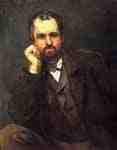
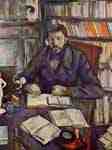
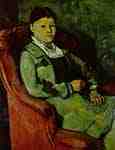
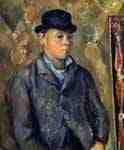
Portrait of his son Paul Cézanne
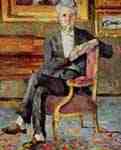
Portrait of Victor Chocquet sitting
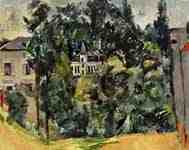
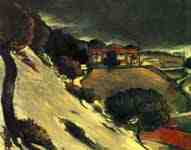
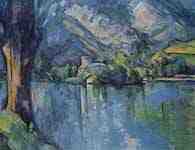
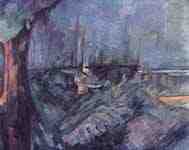
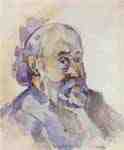
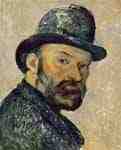
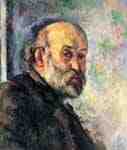
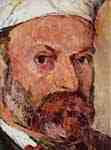
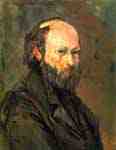
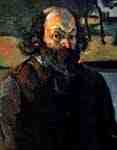
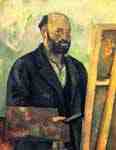
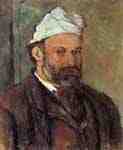
Self-portrait with a white turban
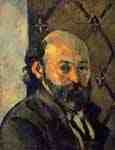
Self- portrait in front of an olive wallpaper
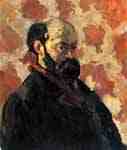
Self-portrait in front of pink background
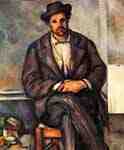
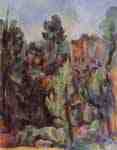
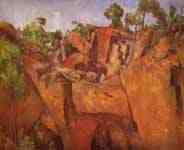
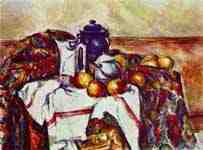
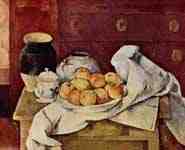
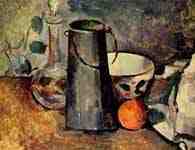
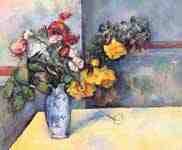
Still Life , Flowers in a Vase
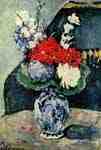
Still life , Delft vase with flowers
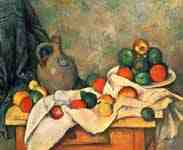
Still life , drapery , jug and fruit bowl
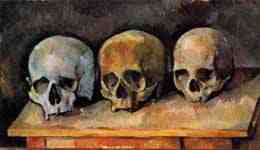
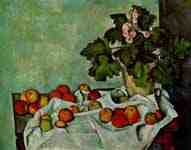
Still life , geranium stick with fruits
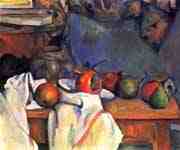
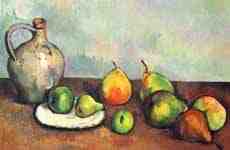
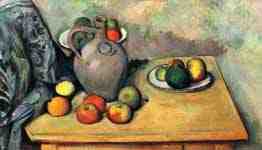
Still life , pitcher and fruit on a table
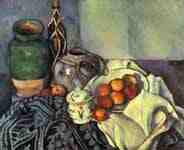
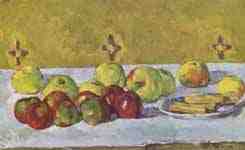
Still life with apples and biscuits
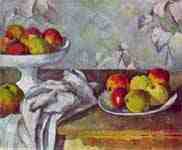
Still life with apples and fruit bowl
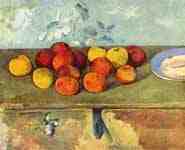
Still life with apples and biscuits
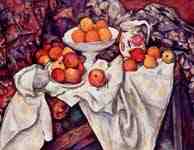
Still life with apples and oranges
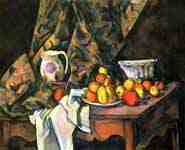
Still life with apples and peaches
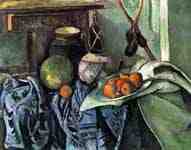
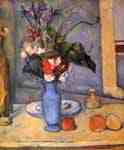
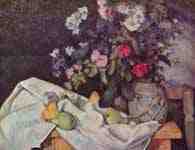
Still life with flowers and fruits
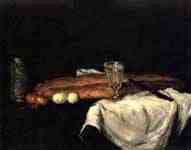
Still life with bread and eggs
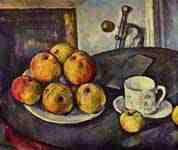
Still life with bottle and apple basket
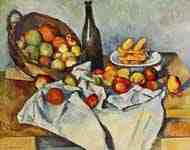
Still life with bottle and apple basket
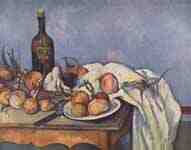
Still life with bottle and onions
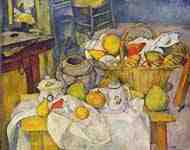
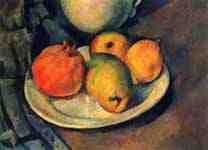
Still Life with Pomegranate and Pears
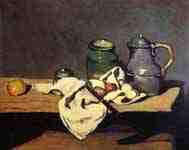 Still life with green container and tin kettles
Still life with green container and tin kettles
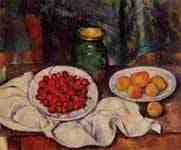
Still life with cherries and peaches
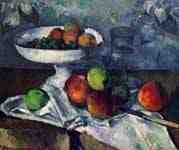
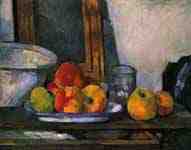
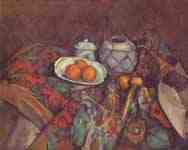
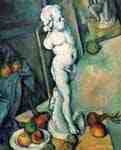
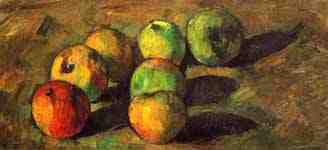
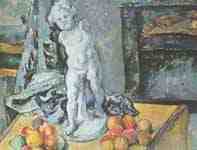
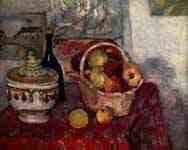
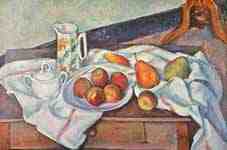
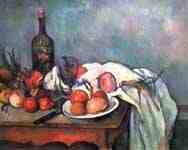
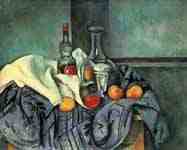
Still life , peppermint bottle
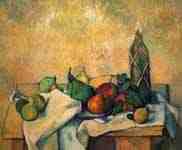
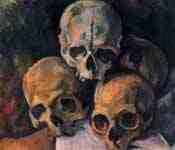
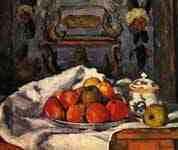
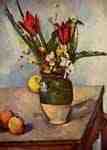
Still life , tulips and apples
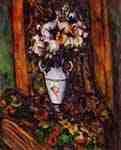
Still life , vase with flowers

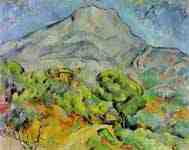
Road at the Montagne Sainte- Victoire
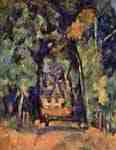
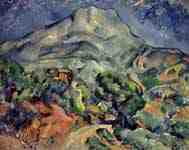
Street in front of the mountain Sainte Victoire
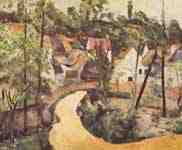
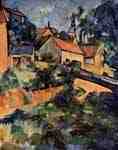
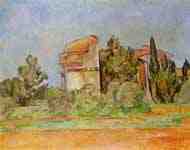
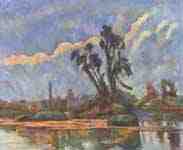
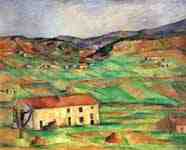
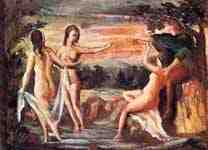
Judgment of Paris
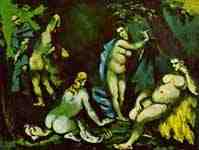
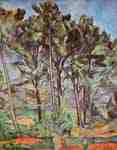
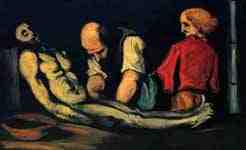
Preparation for burial ( Autopsy )
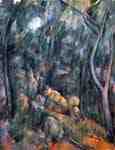
Forest in the rock caves above the Château Noir
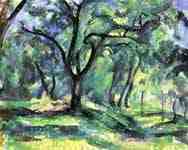
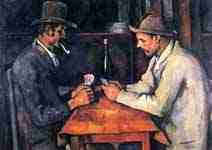
Drawings
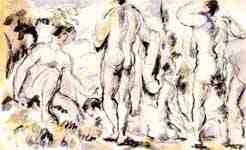
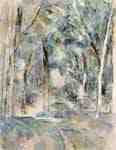
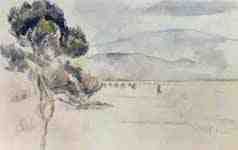

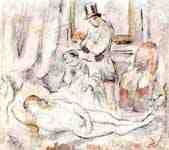
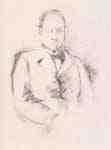
Portrait of the art dealer Ambroise Vollard
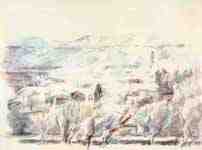

Sketch by Pigalles "love and friendship"
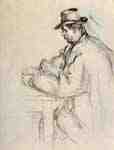

Study after Michelangelo's "slave " in the Louvre
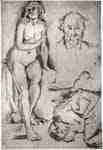
Illustrations
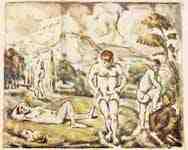
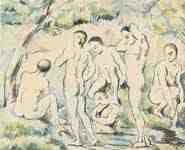
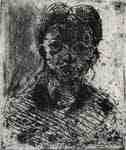
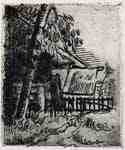
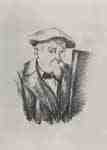
Self- Portrait in Front of the Easel
Paul Cézanne (US /seɪˈzæn/ or UK /sɨˈzæn/; French: [pɔl sezan]; 1839–1906) was a French artist and Post-Impressionist painter whose work laid the foundations of the transition from the 19th-century conception of artistic endeavour to a new and radically different world of art in the 20th century. Cézanne's often repetitive, exploratory brushstrokes are highly characteristic and clearly recognizable. He used planes of colour and small brushstrokes that build up to form complex fields. The paintings convey Cézanne's intense study of his subjects.
Cézanne is said to have formed the bridge between late 19th-century Impressionism and the early 20th century's new line of artistic enquiry, Cubism. Both Matisse and Picasso are said to have remarked that Cézanne "is the father of us all."
Life and work
Early years and family
The Cézannes lived in the town of Cesana now in West Piedmont, and the surname is probably of Italian origin.[1] Paul Cézanne was born on 19 January 1839 in Aix-en-Provence, in Provence in the South of France.[2] On 22 February, Paul was baptized in the Église de la Madeleine, with his grandmother and uncle Louis as godparents.[2][3][4][5] His father, Louis-Auguste Cézanne (1798–1886),[6] was the co-founder of a banking firm that prospered throughout the artist's life, affording him financial security that was unavailable to most of his contemporaries and eventually resulting in a large inheritance.[7]
His mother, Anne Elisabeth Honorine Aubert (1814–1897),[8] was "vivacious and romantic, but quick to take offence".[9] It was from her that Cézanne got his conception and vision of life.[9] He also had two younger sisters, Marie and Rose, with whom he went to a primary school every day.[2][10]
At the age of ten Paul entered the Saint Joseph school in Aix.[11] In 1852 Cézanne entered the Collège Bourbon (now Collège Mignet), where he met and became friends with Émile Zola, who was in a less advanced class,[7][10] as well as Baptistin Baille—three friends who came to be known as "les trois inséparables" (the three inseparables).[12] He stayed there for six years, though in the last two years he was a day scholar.[13] In 1857 he began attending the Free Municipal School of Drawing in Aix, where he studied drawing under Joseph Gibert, a Spanish monk.[14] From 1858 to 1861, complying with his father's wishes, Cézanne attended the law school of the University of Aix, while also receiving drawing lessons.[15]
Going against the objections of his banker father, he committed himself to pursuing his artistic development and left Aix for Paris in 1861. He was strongly encouraged to make this decision by Zola, who was already living in the capital at the time. Eventually, his father reconciled with Cézanne and supported his choice of career. Cézanne later received an inheritance of 400,000 francs (£218,363.62) from his father, which rid him of all financial worries.[16]
Cézanne the artist
Les joueurs de cartes (The Card Players), 1892-95, oil on canvas, 60 x 73 cm, Courtauld Institute of Art, London
In Paris, Cézanne met the Impressionist Camille Pissarro. Initially the friendship formed in the mid-1860s between Pissarro and Cézanne was that of master and disciple, in which Pissarro exerted a formative influence on the younger artist. Over the course of the following decade their landscape painting excursions together, in Louveciennes and Pontoise, led to a collaborative working relationship between equals.
Cézanne's early work is often concerned with the figure in the landscape and includes many paintings of groups of large, heavy figures in the landscape, imaginatively painted. Later in his career, he became more interested in working from direct observation and gradually developed a light, airy painting style. Nevertheless, in Cézanne's mature work there is the development of a solidified, almost architectural style of painting. Throughout his life he struggled to develop an authentic observation of the seen world by the most accurate method of representing it in paint that he could find. To this end, he structurally ordered whatever he perceived into simple forms and colour planes. His statement "I want to make of impressionism something solid and lasting like the art in the museums",[17] and his contention that he was recreating Poussin "after nature" underscored his desire to unite observation of nature with the permanence of classical composition.
Les Grandes Baigneuses, 1898–1905: the triumph of Poussinesque stability and geometric balance
Optical phenomena
Cézanne was interested in the simplification of naturally occurring forms to their geometric essentials: he wanted to "treat nature by the cylinder, the sphere, the cone" (a tree trunk may be conceived of as a cylinder, an apple or orange a sphere, for example). Additionally, Cézanne's desire to capture the truth of perception led him to explore binocular vision graphically, rendering slightly different, yet simultaneous visual perceptions of the same phenomena to provide the viewer with an aesthetic experience of depth different from those of earlier ideals of perspective, in particular single-point perspective. Cézanne's innovations have prompted critics to suggest such varied explanations as sick retinas,[18]pure vision,[19] and the influence of the steam railway.[20]
Exhibitions and subjects
Cézanne's paintings were shown in the first exhibition of the Salon des Refusés in 1863, which displayed works not accepted by the jury of the official Paris Salon. The Salon rejected Cézanne's submissions every year from 1864 to 1869. He continued to submit works to the Salon until 1882. In that year, through the intervention of fellow artist Antoine Guillemet, he exhibited Portrait of Louis-Auguste Cézanne, Father of the Artist, reading 'l'Evénement', 1866 (National Gallery of Art, Washington, D.C.), his first and last successful submission to the Salon.[21]
Still Life with a Curtain (1895) illustrates Cézanne's increasing trend towards terse compression of forms and dynamic tension between geometric figures.
Before 1895 Cézanne exhibited twice with the Impressionists (at the first Impressionist exhibition in 1874 and the third Impressionist exhibition in 1877). In later years a few individual paintings were shown at various venues, until 1895, when the Parisian dealer, Ambroise Vollard, gave the artist his first solo exhibition. Despite the increasing public recognition and financial success, Cézanne chose to work in increasing artistic isolation, usually painting in the south of France, in his beloved Provence, far from Paris.
He concentrated on a few subjects and was equally proficient in each of these genres: still lifes, portraits, landscapes and studies of bathers. For the last, Cézanne was compelled to design from his imagination, due to a lack of available nude models. Like the landscapes, his portraits were drawn from that which was familiar, so that not only his wife and son but local peasants, children and his art dealer served as subjects. His still lifes are at once decorative in design, painted with thick, flat surfaces, yet with a weight reminiscent of Gustave Courbet. The 'props' for his works are still to be found, as he left them, in his studio (atelier), in the suburbs of modern Aix.
Although religious images appeared less frequently in Cézanne's later work, he remained a devout Roman Catholic and said, "When I judge art, I take my painting and put it next to a God-made object like a tree or flower. If it clashes, it is not art."[22]
The Overture to Tannhäuser: The Artist's Mother and Sister, 1868, Hermitage Museum, St. Petersburg
Cézanne's paintings were not well received among the petty bourgeoisie of Aix. In 1903 Henri Rochefort visited the auction of paintings that had been in Zola's possession and published on 9 March 1903 in L'Intransigeant a highly critical article entitled "Love for the Ugly". Rochefort describes how spectators had supposedly experienced laughing fits, when seeing the paintings of "an ultra-impressionist named Cézanne". Erroneously believing that Cézanne's paintings in fact represented "the art dear to Zola" (Rochefort's Dreyfusard arch-enemy), he drew connections between "Dreyfusard snobs," so-called after the French officer who was accused but innocent of having sold defense plans to Germany, and Zola's supposedly cherished artist, Cézanne. The public in Aix was outraged, and for many days, copies of L'Intransigeant appeared on Cézanne's door-mat with messages asking him to leave the town "he was dishonouring".[23]
Death
One day, Cézanne was caught in a storm while working in the field.[24] Only after working for two hours under a downpour did he decide to go home; but on the way he collapsed. He was taken home by a passing driver.[24] His old housekeeper rubbed his arms and legs to restore the circulation; as a result, he regained consciousness.[24] On the following day, he intended to continue working, but later on he fainted; the model with whom he was working called for help; he was put to bed, and he never left it.[24] He died a few days later, on 22 October 1906[24] of pneumonia and was buried at the Saint-Pierre Cemetery in his hometown of Aix-en-Provence.[25]
Main periods of Cézanne's work
Various periods in the work and life of Cézanne have been defined.[26]
Dark period, Paris, 1861–1870
In 1863 Napoleon III created by decree the Salon des Refusés, at which paintings rejected for display at the Salon of the Académie des Beaux-Arts were to be displayed. The artists of the refused works included the young Impressionists, who were considered revolutionary. Cézanne was influenced by their style but his social relations with them were inept—he seemed rude, shy, angry, and given to depression. His works of this period[27] are characterized by dark colours and the heavy use of black. They differ sharply from his earlier watercolours and sketches at the École Spéciale de dessin at Aix-en-Provence in 1859, and their violence of expression is in contrast to his subsequent works.
In 1866–67, inspired by the example of Courbet, Cézanne painted a series of paintings with a palette knife. He later called these works, mostly portraits, une couillarde ("a coarse word for ostentatious virility").[28] Lawrence Gowing has written that Cézanne's palette knife phase "was not only the invention of modern expressionism, although it was incidentally that; the idea of art as emotional ejaculation made its first appearance at this moment".[28]
Among the couillarde paintings are a series of portraits of his uncle Dominique in which Cézanne achieved a style that "was as unified as Impressionism was fragmentary".[29] Later works of the dark period include several erotic or violent subjects, such as Women Dressing (c. 1867), The Rape (c. 1867), and The Murder (c. 1867-68), which depicts a man stabbing a woman who is held down by his female accomplice.
Impressionist period, Provence and Paris, 1870–1878
After the start of the Franco-Prussian War in July 1870, Cézanne and his mistress, Marie-Hortense Fiquet, left Paris for L'Estaque, near Marseilles, where he changed themes to predominantly landscapes. He was declared a draft dodger in January 1871, but the war ended the next month, in February, and the couple moved back to Paris, in the summer of 1871. After the birth of their son Paul in January 1872, in Paris, they moved to Auvers in Val-d'Oise near Paris. Cézanne's mother was kept a party to family events, but his father was not informed of Hortense for fear of risking his wrath. The artist received from his father a monthly allowance of 100 francs.[30]
Jas de Bouffan, 1885–1887
Camille Pissarro lived in Pontoise. There and in Auvers he and Cézanne painted landscapes together. For a long time afterwards, Cézanne described himself as Pissarro's pupil, referring to him as "God the Father", as well as saying: "We all stem from Pissarro."[31] Under Pissarro's influence Cézanne began to abandon dark colours and his canvases grew much brighter.[32]
Leaving Hortense in the Marseille region, Cézanne moved between Paris and Provence, exhibiting in the first (1874) and third Impressionist shows (1877). In 1875, he attracted the attention of the collector Victor Chocquet (de), whose commissions provided some financial relief. But Cézanne's exhibited paintings attracted hilarity, outrage, and sarcasm. Reviewer Louis Leroy said of Cézanne's portrait of Chocquet: "This peculiar looking head, the colour of an old boot might give [a pregnant woman] a shock and cause yellow fever in the fruit of her womb before its entry into the world."[33]
In March 1878, Cézanne's father found out about Hortense and threatened to cut Cézanne off financially, but, in September, he relented and decided to give him 400 francs for his family. Cézanne continued to migrate between the Paris region and Provence until Louis-Auguste had a studio built for him at his home, Jas de Bouffan, in the early 1880s. This was on the upper floor, and an enlarged window was provided, allowing in the northern light but interrupting the line of the eaves. This feature remains today. Cézanne stabilized his residence in L'Estaque. He painted with Renoir there in 1882 and visited Renoir and Monet in 1883.[34]
Mature period, Provence, 1878–1890
Mont Sainte-Victoire (c. 1887), in Courtauld Institute of Art
Paul Cézanne (French, 1839 - 1906 ), Harlequin, 1888-1890, oil on canvas, National Gallery of Art
In the early 1880s the Cézanne family stabilized their residence in Provence where they remained, except for brief sojourns abroad, from then on. The move reflects a new independence from the Paris-centered impressionists and a marked preference for the south, Cézanne's native soil. Hortense's brother had a house within view of Montagne Sainte-Victoire at Estaque. A run of paintings of this mountain from 1880 to 1883 and others of Gardanne from 1885 to 1888 are sometimes known as "the Constructive Period".
The year 1886 was a turning point for the family. Cézanne married Hortense. In that year also, Cézanne's father died, leaving him the estate purchased in 1859; he was 47. By 1888 the family was in the former manor, Jas de Bouffan, a substantial house and grounds with outbuildings, which afforded a new-found comfort. This house, with much-reduced grounds, is now owned by the city and is open to the public on a restricted basis.
Also in that year Cézanne broke off his friendship with Émile Zola, after the latter used him, in large part, as the basis for the unsuccessful and ultimately tragic fictitious artist Claude Lantier, in the novel L'Œuvre. Cézanne considered this a breach of decorum and a friendship begun in childhood was irreparably damaged.
Final period, Provence, 1890–1906
Pyramid of Skulls, c. 1901, The dramatic resignation to death informs several still life paintings Cézanne made in his final period between 1898 and 1905 which take the skulls as their subject. Today the skulls themselves remain in Cézanne's studio in a suburb of Aix-en-Provence.
Cézanne's idyllic period at Jas de Bouffan was temporary. From 1890 until his death he was beset by troubling events and he withdrew further into his painting, spending long periods as a virtual recluse. His paintings became well-known and sought after and he was the object of respect from a new generation of painters.
The problems began with the onset of diabetes in 1890, destabilizing his personality to the point where relationships with others were again strained. He traveled in Switzerland, with Hortense and his son, perhaps hoping to restore their relationship. Cézanne, however, returned to Provence to live; Hortense and Paul junior, to Paris. Financial need prompted Hortense's return to Provence but in separate living quarters. Cézanne moved in with his mother and sister. In 1891 he turned to Catholicism.
Cézanne alternated between painting at Jas de Bouffan and in the Paris region, as before. In 1895 he made a germinal visit to Bibémus Quarries and climbed Montagne Sainte-Victoire. The labyrinthine landscape of the quarries must have struck a note, as he rented a cabin there in 1897 and painted extensively from it. The shapes are believed to have inspired the embryonic "Cubist" style. Also in that year, his mother died, an upsetting event but one which made reconciliation with his wife possible. He sold the empty nest at Jas de Bouffan and rented a place on Rue Boulegon, where he built a studio.
The relationship, however, continued to be stormy. He needed a place to be by himself. In 1901 he bought some land along the Chemin des Lauves, an isolated road on some high ground at Aix, and commissioned a studio to be built there (now open to the public). He moved there in 1903. Meanwhile, in 1902, he had drafted a will excluding his wife from his estate and leaving everything to his son. The relationship was apparently off again; she is said to have burned the mementos of his mother.
Madame Cézanne (Hortense Fiquet, 1850–1922) in a Red Dress (1888-90), oil on canvas, 116.5 x 89.5 cm, The Metropolitan Museum of Art, New York
From 1903 to the end of his life he painted in his studio, working for a month in 1904 with Émile Bernard, who stayed as a house guest. After his death it became a monument, Atelier Paul Cézanne, or les Lauves.
Cézanne's Doubt: An Essay by Maurice Merleau-Ponty
Cézanne's stylistic approaches and beliefs regarding how to paint were analyzed and written about by the French philosopher Maurice Merleau-Ponty who is primarily known for his association with phenomenology and existentialism.[35] In his 1945 essay entitled Cézanne's Doubt, Merleau-Ponty discusses how Cézanne gave up classic artistic elements such as pictorial arrangements, single view perspectives, and outlines that enclosed color in an attempt to get a "lived perspective" by capturing all the complexities that an eye observes. He wanted to see and sense the objects he was painting, rather than think about them. Ultimately, he wanted to get to the point where "sight" was also "touch". He would take hours sometimes to put down a single stroke because each stroke needed to contain "the air, the light, the object, the composition, the character, the outline, and the style". A still life might have taken Cézanne one hundred working sessions while a portrait took him around one hundred and fifty sessions. Cèzanne believed that while he was painting, he was capturing a moment in time, that once passed, could not come back. The atmosphere surrounding what he was painting was a part of the sensational reality he was painting. Cèzanne claimed: "Art is a personal apperception, which I embody in sensations and which I ask the understanding to organize into a painting."[36]
Legacy
View of the 1904 Salon d'Automne, photograph by Ambroise Vollard, Salle Cézanne (Victor Choquet, Baigneuses, etc.)
Cézanne's works were rejected numerous times by the official Salon in Paris and ridiculed by art critics when exhibited with the Impressionists’. Yet during his lifetime Cézanne was considered a master by younger artists who visited his studio in Aix.[37]
After Cézanne died in 1906, his paintings were exhibited in Paris in a large museum-like retrospective in September 1907. The 1907 Cézanne retrospective at the Salon d'Automne greatly affected the direction that the avant-garde in Paris took, lending credence to his position as one of the most influential artists of the 19th century and to the advent of Cubism.
Inspired by Cézanne, two of the younger artists wrote:
"Cézanne is one of the greatest of those who changed the course of art history . . . From him we have learned that to alter the coloring of an object is to alter its structure. His work proves without doubt that painting is not—or not any longer—the art of imitating an object by lines and colors, but of giving plastic [solid] form to our nature." (Albert Gleizes and Jean Metzinger in Du "Cubisme", 1912)[37]
Cézanne's explorations of geometric simplification and optical phenomena inspired Picasso, Braque, Metzinger, Gleizes, Gris and others to experiment with ever more complex multiple views of the same subject and eventually to the fracturing of form. Cézanne thus sparked one of the most revolutionary areas of artistic enquiry of the 20th century, one which was to affect profoundly the development of modern art. Picasso referred to Cézanne as "the father of us all" and claimed him as "my one and only master!" Other painters such as Edgar Degas, Pierre-Auguste Renoir, Paul Gauguin, Kasimir Malevich, Georges Rouault, Paul Klee, and Henri Matisse acknowledged Cézanne’s genius.[37]
A prize in his memory, called the Cézanne medal, is granted by the city of Aix en Provence, in France for special achievement in the arts.
Cézanne's painting The Boy in the Red Vest was stolen from a Swiss museum in 2008. It was recovered in a Serbian police raid in 2012.[38]
The Bathers (Cézanne)
Notes
J. Lindsay Cézanne; his life and art, p.3
J. Lindsay Cézanne; his life and art, p.6
Dominique Auzias, Le Petit Futé, 2008 p. 142 [1]
Dominique Auzias, Jean-Paul Labourdette, Aix-en-Provence 2012, Le Petit Futé, 2012, p. 299 [2]
Olivier-René Veillon, Seul comme Cézanne, Maisonneuve et Larose, 1995, p. 24.
"Louis Auguste Cézanne". Guarda-Mor, Edição de Publicações Multimédia Lda. Archived from the original on 29 March 2007. Retrieved 27 February 2007.
"Paul Cézanne Biography (1839–1906)". Biography.com. Retrieved 17 February 2007.
"Louis Auguste Cézanne". Guarda-Mor, Edição de Publicações Multimédia Lda. Archived from the original on 29 March 2007. Retrieved 27 February 2007.
A. Vollard First Impressions, p.16
A. Vollard, First Impressions, p.14
P. Machotka Narration and Vision, p.9
"National Gallery of Art timeline, retrieved February 11, 2009". Nga.gov. Retrieved 19 January 2011.
J. Lindsay Cézanne; his life and art, p.12
Gowing 1988, p. 215
P. Cézanne Paul Cézanne, letters, p.10
J. Lindsay Cézanne; his life and art, p.232
Paul Cézanne, Letters, edited by John Rewald, 1984.
Joris-Karl Huysmans, "Trois peintres: Cézanne, Tissot, Wagner," La Cravache, 4 August 1888.
Hans Sedlmayr, Art in Crisis: The Lost Center, London, 1957. (original German 1948)
"Cezanne and the Steam Railway (1)". Tomoki Akimaru (Art Historian).
Gowing 1988, p. 110
"Paul Cézanne quotes". ThinkExist.com Quotations. Retrieved 17 February 2007.
The Unknown Matisse: A Life of Henri Matisse. Retrieved 19 January 2011.
Vollard, p.113–114
"Paul Cézanne 1839–1906". MyStudios.com. Retrieved 18 February 2007.
The scheme presented here is essentially that of the Encyclopædia Britannica. Some alternative names are mentioned. On the whole the various classifications tend to converge.
It is sometimes called "the Romantic Period", but Cézanne was not primarily interested in Romanticism. The term here refers to personal disposition, rather than connection with a historical movement.
Gowing 1988, p. 10.
Gowing 1988, p. 104.
"Cézanne in Provence: A Provençal Chronology of Cézanne: 1870–1879", National Gallery of Art. Retrieved 14 February 2015.
Brion 1974, p. 26
Rosenblum 1989, p. 348
Brion 1974, p. 34
"Cézanne in Provence: A Provençal Chronology of Cézanne: 1880–1889", National Gallery of Art. Retrieved 14 February 2015.
"Maurice Merleau-Ponty (1908—1961)". Internet Encyclopedia of Philosophy. Iep.utm.edu.
Merleau-Ponty 1965
Philadelphia Museum of Art. "Philadelphia Museum of Art". philamuseum.org.
"Serb police find stolen Cezanne painting". CBS News. 12 April 2012. Retrieved 23 May 2012.
"Woman with a Coffeepot". www.musee-orsay.fr.
References
Brion, Marcel (1974). Cézanne. Thames and Hudson. ISBN 0-500-86004-1.
Chun, Young-Paik (2006). "Melancholia and Cézanne's Portraits: Faces beyond the mirror". In Griselda Pollock (ed.). Psychoanalysis and the Image. Routledge. ISBN 1-4051-3461-5.
Cézanne, Paul; John Rewald; Émile Zola; Marguerite Kay (1941). Paul Cézanne, letters. B. Cassirer. ISBN 0-87817-276-9. OCLC 1196743.
Danchev, Alex (2012). Cézanne: A Life. Profile Books (UK); Pantheon (US). ISBN 978-1846681653.
Gowing, Lawrence; Adriani, Götz; Krumrine, Mary Louise; Lewis, Mary Tompkins; Patin, Sylvie; Rewald, John (1988). Cézanne: The Early Years 1859–1872. Harry N. Abrams.
Lehrer, Jonah (2007). "Paul Cézanne, The Process of Sight". In Jonah Lehrer. Proust Was a Neuroscientist. Houghton Mifflin Harcourt. ISBN 0-618-62010-9.
Klingsor, Tristan (1923). Cézanne. Paris: Rieder.
Lindsay, Jack (1969). Cézanne: His Life and Art. United States: New York Graphic Society. ISBN 0-8212-0340-1. OCLC 18027.
Machotka, Pavel (1996). Cézanne: Landscape into Art. United States: Yale University Press. ISBN 0-300-06701-1. OCLC 34558348.
Pissarro, Joachim (2005). Cézanne & Pissarro Pioneering Modern Painting: 1865–1885. The Museum of Modern Art. ISBN 0-87070-184-3.
Rosenblum, Robert (1989). Paintings in the Musée d'Orsay. New York: Stewart, Tabori & Chang. ISBN 1-55670-099-7.
Vollard, Ambroise (1984). Cézanne. England: Courier Dover Publications. ISBN 0-486-24729-5. OCLC 10725645.
Cezanne: A Life , Alex Danchev
Artist
A - B - C - D - E - F - G - H - I - J - K - L - M -
N - O - P - Q - R - S - T - U - V - W - X - Y - Z
Retrieved from "http://en.wikipedia.org/"
All text is available under the terms of the GNU Free Documentation License



